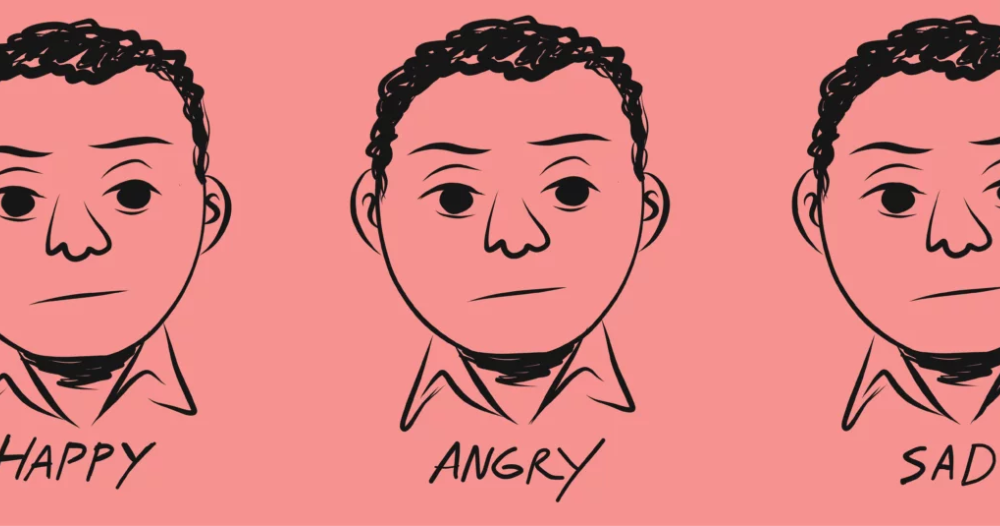Discover the truth about negative reinforcement – how it works, real-life examples, and why it’s a powerful tool for behaviour change. Unpack its role in learning and everyday life!
Table of Contents
Introduction
Negative reinforcement – sounds like a scary term, right? If you’re picturing punishment or something punitive, you’re not alone. It’s easy to confuse negativ reinforcement with punishment, but they’re actually quite different. Understanding the nuances between them can help you tap into a powerful tool for behaviour change, whether you’re managing kids, training pets, or just trying to be more mindful of your own habits.
So, let’s break it down. By the end of this article, you’ll have a clearer idea of what negativ reinforcement is, how it works, and how you can use it to your advantage. Trust me – it’s not as sinister as it sounds!
What is Negative Reinforcement?

Before we dive into examples, let’s set the record straight: Negativ reinforcement is not the same as punishment. In fact, it’s actually about removing something unpleasant in order to increase the likelihood of a behaviour happening again. A lot of people misunderstand this concept, thinking that it involves giving a consequence, but it’s really more about taking something away that’s unwanted.
Breaking It Down: The Basics of Negative Reinforcement
Here’s the simplest way to explain it: Negativ reinforcement happens when a behaviour is followed by the removal (or avoidance) of something unpleasant. This makes the behaviour more likely to happen again in the future.
Let’s use an example:
- Imagine you’re at work, and the boss keeps sending you annoying emails every time you miss a deadline.
- You finally get the hint, and you start completing tasks on time.
- The unpleasant emails stop.
Now, because the annoying emails were removed (negatively reinforced), you’re more likely to hit your deadlines in the future, just to avoid that unpleasant situation.
In short: You’re doing something to get rid of something bad!
Example of Negative Reinforcement

So, we’ve got the definition down, but how does this actually play out in real life? Negativ reinforcement isn’t just a theoretical concept; it happens around us every day. Let’s take a look at a few scenarios where negativ reinforcement can work its magic:
1. Training a Dog to Sit
We’ve all seen it – the dog trainer with a treat, trying to get the dog to obey. The basic idea is that when the dog follows the command, they get a reward (positive reinforcement). But negativ reinforcement works here too:
- Imagine your dog is pulling on the lead, and you want them to stop. You give a small tug on the lead (the “unpleasant” stimulus).
- When the dog stops pulling, you release the tension.
What just happened? The dog’s behaviour was reinforced because they learned that pulling less (or not pulling at all) removed the discomfort of the lead tugging. So, next time, they’re more likely to stay by your side.
2. Teaching Kids to Do Homework
Let’s face it: kids don’t always love doing homework. But negativ reinforcement can help motivate them. Imagine you have a child who whines about homework all the time, so you make a deal:
- “If you do your homework now, you can have 30 minutes of screen time.”
- In this case, you’re not adding something (positive reinforcement like a treat); instead, you’re removing the “no screen time” rule, which is the negative part.
By taking away an unpleasant thing (the restriction), you’re reinforcing the behaviour of doing homework without complaints.
3. Sticking to a Gym Routine
We all know how tough it can be to stay consistent with exercise. Here’s where negativ reinforcement might come in handy:
- Let’s say you dread going to the gym. You’re just not feeling it, but you push yourself to go.
- After a few workouts, you realise that the unpleasant feelings of guilt and lethargy (which you’d get if you skipped the gym) disappear once you’ve actually done the workout.
In this case, you’re using the removal of those guilty feelings to reinforce your workout behaviour. You’ve learned that going to the gym removes the “bad” feelings, so you’re more likely to go again.
How Negative Reinforcement Differs from Punishment

It’s easy to mix up negative reinforcment and punishment, but here’s the key difference:
- Negative reinforcement removes something unpleasant to encourage a behaviour.
- Punishment adds something unpleasant to discourage a behaviour.
Let’s clear that up with another example:
- Negative reinforcement: You stop the loud beeping sound in your car by fastening your seatbelt. The unpleasant sound is removed, and you’re more likely to wear the seatbelt again.
- Punishment: You get a fine for not wearing your seatbelt. The unpleasant consequence (the fine) is added, and you’re less likely to repeat the behaviour.
As you can see, one is about taking something away, and the other is about adding something undesirable. They’re opposite sides of the same coin.
The Psychology Behind Negative Reinforcement

You might be wondering: why does negativ reinforcement work? Well, it has a lot to do with our brain’s response to discomfort and reward. Humans, like many animals, are motivated by avoiding pain and seeking pleasure.
When something unpleasant is removed after we perform a certain action, our brain learns that this action is a way to avoid discomfort. Over time, we start to repeat the behaviour because we want to keep that discomfort at bay.
Psychologists refer to this process as “escape learning” or “avoidance learning.” It’s a simple but powerful mechanism that plays a huge role in shaping our behaviours.
When Negative Reinforcement is Useful

While it can be effective, negative reinforcement isn’t always the best approach. It depends on the context and the goals you’re trying to achieve. Here are some situations where it can work well:
- Habits you want to break: If you’re trying to stop procrastinating, negativ reinforcement can help. For example, if you finish a task on time, you remove the stress and guilt that would have followed.
- Behavioural training: Whether it’s for animals, kids, or adults, negativ reinforcement can be useful for teaching behaviours you want to see more of (like showing up on time, being organised, or behaving politely).
- Avoiding bad outcomes: When you can use negativ reinforcement to avoid undesirable outcomes (like an early alarm to get you out of bed, avoiding traffic, or maintaining safety at work), it’s often effective.
Common Mistakes with Negative Reinforcement

It’s not all sunshine and rainbows, though. When used incorrectly, negative reinforcement can backfire or become counterproductive. Here are a few common mistakes people make:
- Inconsistency: If you’re not consistent with removing the unpleasant stimulus, the behaviour may not be reinforced properly.
- Over-reliance: If you always rely on negativ reinforcement, you might miss the opportunity to use positive reinforcement to motivate behaviour.
- Ambiguity: If the unpleasant stimulus is unclear or inconsistent, the person or animal may not understand what action to take to avoid it.
So, while negative reinforcement is a useful tool, it’s important to strike a balance and make sure it’s applied properly.
Conclusion
There you have it – the real deal on negative reinforcement. It’s not something to be afraid of, but rather a tool that can be used strategically to encourage behaviours and improve outcomes. Whether you’re training a dog, teaching kids, or trying to manage your own habits, negativ reinforcement can work wonders if applied in the right way. Just remember, it’s all about removing the unpleasant stuff – not adding to it.
So, the next time you want to boost your motivation or encourage a certain behaviour, think about what you can remove to make the process easier and more enjoyable. Who knew that the negative side of reinforcement could be so positive?
Positive Reinforcement Power: How Can You Implement it?
For Video Content: Checkout Our Youtube Channel
FAQs about Negative Reinforcement
Can negative reinforcement be harmful?
If used too frequently or without clear boundaries, negative reinforcement can lead to stress or confusion. It’s important to balance it with positive reinforcement and ensure the undesirable stimulus is something the individual can actually avoid or remove.
Is negative reinforcement the same as reward?
No. Negative reinforcement involves the removal of something unpleasant, while a reward (positive reinforcement) adds something desirable. Both aim to increase a behaviour, but they use different strategies.
Does negative reinforcement work for adults too?
Absolutely! Negative reinforcement can be just as effective for adults, especially when it comes to breaking bad habits, staying organised, or even motivating yourself at work.
By: Ardansharma



Pingback: Negative Reinforcement vs Positive Reinforcement: Which One Works Best? - Body Language and Psychology